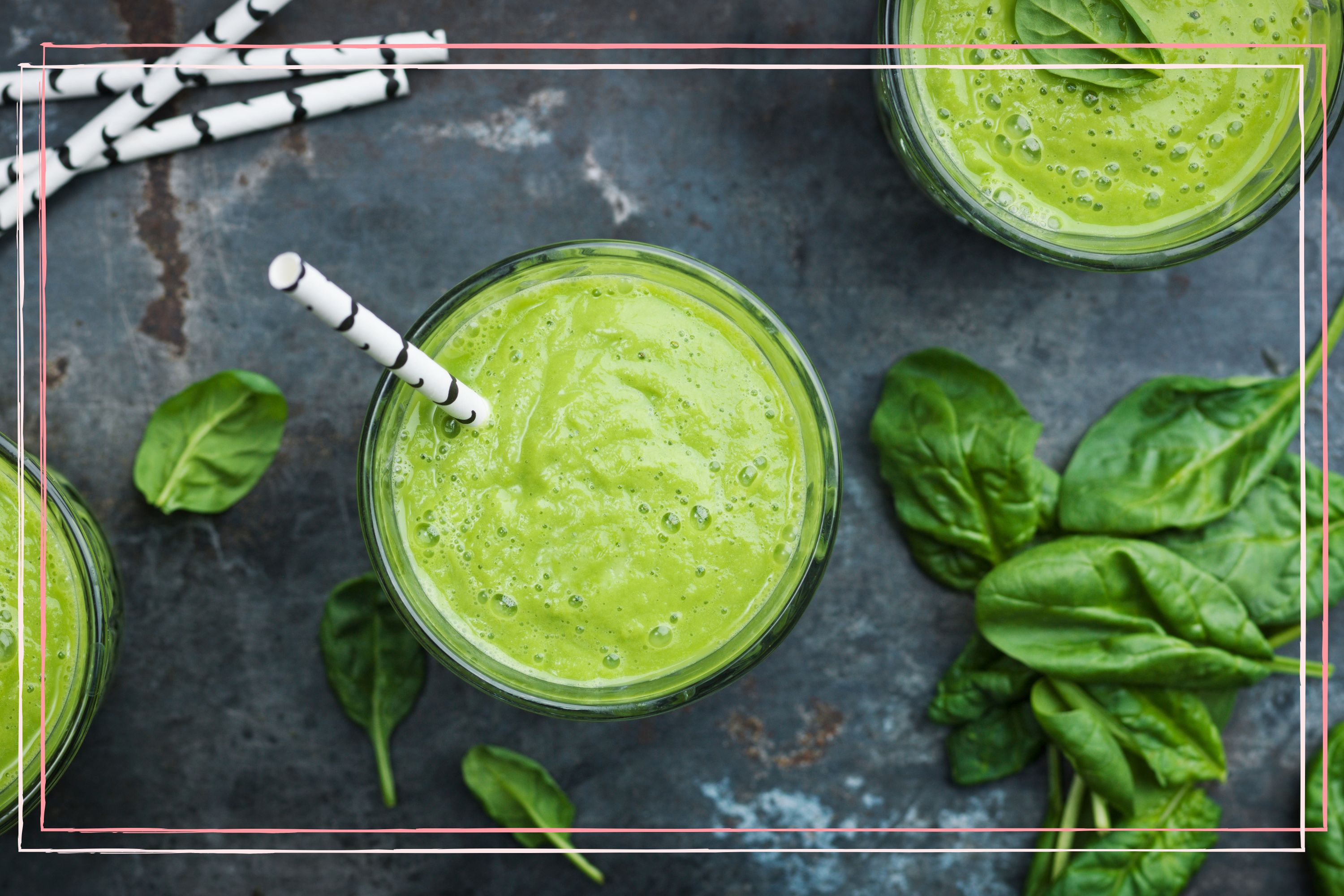What is the Sirtfood Diet? Everything you need to know about Adele's rumoured weight loss method
Say goodbye to hunger and hello to a long-term diet plan...


The sirtfood diet it was recently made famous again after Adele reportedly followed the plan to lose a substantial amount of weight. So, what is the Sirtfood Diet?
Credited by many as being the diet behind Adele's weight loss, this celebrity diet involves eating specific foods that stimulate particular proteins in the body. "It's perhaps slightly less well known than the ketogenic diet," explains clinical nutritonist Suzie Sawyer. "It's high in polyphenols which are rich in antioxidants and highly protective of overall health." The downside of the diet, Suzie adds, is that the sirtfood diet is "super-low in calories, starting around 1,000 a day initially, rising to 1,500 calories per day after the first three days." Meaning you're likely to feel hungry and low in energy when you first start following the sirtfood diet.
There's also not much evidence to say it's a diet that works any better than other calorie restricted diets, such as the Fast 800 diet. And while no one should feel pressured into losing weight, if you're curious to try the sirtfood diet, we've spoken to the experts to find out everything you need to know.
What is the sirtfood diet?
The sirtfood diet is a strict, calorie-controlled eating plan that promises to reduce bodily inflammation, increase your life span and turn on the so-called 'skinny gene' by eating a diet that is rich is 'sirtfoods'.
The diet came into existence in 2015 after a study on proteins, known as sirtuins, suggested that they regulate a whole host of functions in the body - including those to do with the metabolism, inflammation and lifespan.
It was thought that certain compounds in plants can increase the level of these proteins in the body, and the foods containing these compounds were named "sirtfoods".
The book The Sirtfood Diet by nutritionists Aidan Goggins and Glen Matten is the leading guide on the sirtfood diet.
Parenting advice, hot topics, best buys and family finance tips delivered straight to your inbox.
The Sirtfood Diet - £5.28 | Amazon
Based on trials that showed an increase in lean muscle, as well as consistent weight loss of 7lbs over the course of just one week, The Sirtfood Diet is revolutionizing sports nutrition and healthy eating. Written by the nutritional experts behind those trials, this book gives you: a simple, healthy way of eating for weight loss; inspirational case studies; delicious, easy-to-make recipes; a maintenance plan for prolonged success.
While it lay on the sidelines of the diet industry for a few years, when Adele posted a picture on Instagram that revealed the singer had lost a significant amount of weight, the sirtfood diet has seen renewed interest.
Adele herself has dismissed claims she followed the sirtfood diet, telling Vogue was because of her anxiety. She explained: "Working out, I would just feel better. It was never about losing weight, it was always about becoming strong and giving myself as much time every day without my phone."
She went on to add: "If anything I eat more than I used to because I work out so hard."
Nevertheless, many fans were convinced that Adele had been following some kind of diet plan, and the sirtfood diet saw a resurgence as a result.
A post shared by Adele (@adele)
A photo posted by on
How does the sirtfood diet work?
The sirtfood diet works by upping the intake of healthy sirtfoods, which stimulate the production of proteins called sirtuins. These are proteins in the body that have a specific effect on the body's metabolism. When combined with calorie restriction and exercise, the diet may trigger the body to produce more sirtuins.
"There are seven sirt proteins and each has a specific metabolic function," says Dr Deborah Lee of Dr Fox Pharmacy. "One of them, known as S1, is associated with fat breakdown and weight loss".
This is the sirt protein that the sirtfood diet focuses on and "is why you may have heard of the sirtfood diet as the diet which activates the 'skinny gene' pathways in the body," explains Deborah Lee.
The S1 pathway is the same one commonly activated by fasting - which is part of other regimes such as the 16:8 diet - and exercise. It helps the body to burn fat, increase muscle mass and improve overall health.
But it's not only weight loss that the diet focuses on, explains Dr Lee. "The authors of the sirtfood diet believe that eating sirtfoods not only activates sirt genes but also helps to stabilise blood sugars and fight inflammation," she says.
"Sirtuins have been identified as having an important role in anti-aging too. Some scientists believe that increasing the dietary intake of sirtuins and doing more physical exercise may extend the human lifespan."
How much weight can you lose on the sirtfood diet?
Authors of the sirtfood diet claim that it can help you lose 7 pounds (3.2kg) in 7 days. This is because your calorie limit is reduced to just 1000 calories per day during the first seven days. This total is made up of three green juices and one meal, chosen freely.
While there are certainly benefits to the sirtfood diet, it's arguable that the majority of the weight loss comes from this intense calorie restriction and combined exercise regime - rather than due to any real intervention from the sirtfoods.
For instance, many studies - including one from the American Journal of Clinical Nutrition - show that calorie restrictive diets are one of the most successful ways to lose weight. When you restrict the number of calories you eat to below your maintenance level, which is the number of calories your body needs per day to sustain typical function, you enter a deficit. The larger the deficit, the more weight you are going to lose as instead of taking its energy from food sources, you body takes its energy from other reserves - like water and fat.
Looking at how many calories in a pound of fat, the leading research on the subject concludes that a deficit of 500 calories per day will lead to 1 pound of weight loss. By eating just 1000 calories per day on the sirtfood diet, the average woman is in a deficit of double that, which may enable rapid weigh loss.
What can you eat on the Sirtfood Diet?
- Apples
- Strawberries
- Grapes
- Soybeans
- Tofu
- Shallots
- Liquorice
- Olive oil
- Kale
- Red and White wine
- Onions
- Buckwheat
- Blueberries
- Matcha green tea
- Dark chocolate (85% cocoa)
- Parsley
- Walnuts
- Birds-eye chillies
- Capers
- Coffee
- Lovage
- Green Tea
- Medjool dates
- Turmeric
A post shared by The Sirtfood Diet (@thesirtfooddiet)
A photo posted by on
"Sirtfoods comprise of a range of specific sirt-rich foods," says Dr Deborah Lee. "Examples include resveratrol, often found in grapes and red wine. Quercetin, found in buckwheat, onions and green vegetables. And omega-3 fatty acids, typically found in oily fish, nuts and seeds."
But the authors of the sirtfood diet insist that processed foods and those high in sugar should be avoided. And as Dr Lee says, while medjool dates are sirtfoods, "all dried fruits are high in sugar - so don't overdo it."
She adds: "On the sirtfood diet, high-carb foods such as pasta, potatoes, beans and legumes are to be avoided as they are not sirtfoods. When following the diet, you should fill up on green vegetables instead."
But there's still some 'fun' foods left to enjoy. "Dairy foods such as milk, eggs and butter are permitted," Dr Lee says, but she warns about sticking to the quantities recommended in the recipes.
The biggest positive of the sirtfood diet, which puts it in real contrast to other restrictive eating plans, is the green light on red wine, dark chocolate and coffee.
"These are actively encouraged on the sirtfood diet. You can drink two to three glasses of red wine per week, coffee and dark chocolate are all approved," Dr Lee says.
Can you eat meat on the Sirtfood Diet?
Yes, you can eat meat on the sirtfood diet. The maximum amount allowed is 750g of red meat three times per week.
"Meat is a good source of leucine, an amino acid that enhances the action of S1," says Dr Lee. "But avoid processed meats such as bacon, salami, and ham as these are processed foods. Fish and poultry can be eaten as often as you like. Oily fish is recommended."
Eating meat on the sirtfood diet is entirely optional. It's by no means an integral part of the plan. This means the sirtfood diet can be a vegetarian and vegan-friendly choice too.
Can you drink coffee on the Sirtfood Diet?
Yes, you can drink all fluids, including coffee, freely throughout all the stages of the sirtfood diet. In fact coffee is a recommended part of the plan and is listed within the top 20 sirtfoods.
But if you do drink coffee, don't add too much milk. "Coffee should be black as milk can interfere with the absorption of some of the nutrients in the diet," Dr Lee says.
And as well as helping to produce more of those sirtuins, "drinking coffee can help you burn an extra 100 calories per day."
You may, however, wish to go easy on the caffeinated drinks when you're on the sirtfood diet. As well as evidence from 2016 that shows the overconsumption of caffeine can cause high blood pressure, there's the risk of insomnia and headaches - especially when combined with a low-calorie diet.
How to follow the Sirtfood Diet
- Organisation is key: You will need to purchase the food ingredients for your first few days on the diet in advance.
- Make sure you have a proper juicer: A blender or a NutriBullet won’t do – they just produce a green sludge.
- Choose your Sirtfood meals: There are many recipes to choose from in The Sirtfood Diet book.
- Start at the right time for you: Think ahead about what you have planned and how you can deal with this way of eating.
A post shared by The Sirtfood Diet (@thesirtfooddiet)
A photo posted by on
Yet, even with forward planning, the sirtfood diet can be difficult to start. "From a behavioural psychology point of view, it’s quite hard to implement all of its recommendations at once," says Alex Ruani, UCL doctoral researcher and chief science educator at The Health Sciences Academy.
"It requires a lot of preparation, cooking skills, getting the right equipment (like a juicer instead of a blender), and making radical changes in the way we eat and when or how we eat. The sheer number of items to prepare may be off-putting even for someone who has excellent planning or cooking skills."
Plus, limiting the number of calories you eat every day will really be off-putting for some people. So, choose a time to start that doesn't clash with an event in your life that could derail your plan - like a holiday.
"The first week requires extreme caloric restriction, so it’s not an easy start for most people," says Alex.
Days one to three are most intensive. Your intake is just 1,000 calories – consisting of three juices and one meal. Days four to seven are a little more lenient with a calorie maximum of 1,500 calories per day.
Creators of the sirtfood diet Aidan and Glen say that in order to combat the fasting period, people shouldn't focus on how much weight they are losing. Rather, they should look at the health impact on their body, how their clothes fit and whether their skin appears any better.
They also advise fasters to spread the juices out throughout the day rather than having them too close together. Consume the juices at least an hour or two before and after meals, they say.
You also need to be wary about exercising during the first stage when you are not consuming many calories.
"Although the diet promises losing fat while maintaining muscle mass, when you limit your calories severely, you will inevitably lose some muscle mass," says Alex. "And even more so if you exercise, as you’ll be more rapidly depleting glycogen stores in muscle, so the body starts breaking down muscle protein for fuel."
Is the Sirtfood Diet a long-term plan?
No, the sirtfood diet isn't suitable as a long-term healthy weight loss plan. "The calorie restriction is severe. It may lead to symptoms such as headaches, feeling cold, constipation and difficulty sleeping," Dr Lee says.
"Some people have also said that the diet may not contain adequate amounts of protein. Also, drinking copious amounts of fruit juice damages tooth enamel. It can be dangerous for your teeth."
If you're looking for better weight loss then you need to change your eating patterns long-term, she says. "It's unlikely you could stick to the sirtfood diet indefinitely. A more rational approach would be just to add sirtfoods to your daily meals."
The Sirtfood Diet: a nutritionist’s verdict
Clinical nutritionist Suzie Sawyer says that, overall, there are some health benefits to the plan. But also some real gaps in the nutritional makeup of the sirtfood diet.
"Certain foods are categorised as 'sirtfoods', including apples, blueberries, kale, dark chocolate, and green tea, turkey, chicken, and prawns. The diet is therefore low in energising B vitamins that whole foods such as beans and whole grains are rich in. Plus, total protein in the sirtfood diet is poor. For these reasons, and also the low-calorie intake, it is not a sustainable way to lose weight for most people," she says.
"Any diet plan where calorie intake is severely restrictive can only be followed for short periods. Especially since hunger pangs can be debilitating for many people. However, it may be good for a 'quick fix' with a view to following a more sustainable eating plan thereafter.
"And with all diets, whatever plan, you will be missing out on vital nutrients to fuel the body. So it is essential to take a multi-vitamin and multi-mineral supplement daily. I swear by the Alive! Multivitamin gummies. They are full of a-z of nutrients and they contain 26 fruit and vegetables, as well as a host of botanical blends to help with all wellness needs.”
While Dr Deborah Lee agrees that it's not a long-term solution for weight loss, in the short-term it may be a way to jumpstart your diet.
"We all eat too much and have too large portion sizes. If this diet helps people choose healthy food, and eat little and often, this has to be a good thing," she says. "The diet is creative, with interesting recipes and offers a wide choice of foods."
Video of the Week

Having worked for many years in the NHS, mostly as Lead Clinician within an integrated Community Sexual Health Service, Dr Deborah Lee now works as a health and medical writer, with an emphasis on women's health, including medical content for Dr Fox pharmacy. She has published several books and remains passionate about all aspects of medicine and sexual health.

Suzie Sawyer is a nutritional expert with more than 20+ years of experience. Specialising in female health and food supplements, she is a member of the British Association for Applied Nutrition and has a diploma in nutrition from the Institute for Optimum Nutrition, London. Suzie has been featured in a range of title, including Women’s Health, woman&home, Women, Women’s Own, and Daily Mail.

Grace Walsh is a health and wellbeing writer, working across the subjects of family, relationships, and LGBT topics, as well as sleep and mental health. A digital journalist with over six years experience as a writer and editor for UK publications, Grace is currently Health Editor for womanandhome.com and has also worked with Cosmopolitan, Red, The i Paper, GoodtoKnow, and more. After graduating from the University of Warwick, she started her career writing about the complexities of sex and relationships, before combining personal hobbies with professional and writing about fitness.
